The Beagle Dog Breed: A Complete Guide to One of the World’s Most Beloved Hounds
Introduction
Few dog breeds have captured hearts across the world quite like the Beagle Dog. With their soulful eyes, floppy ears, and wagging tails, Beagles are the embodiment of charm and personality. But behind that adorable face is a breed steeped in history, bred for a specific purpose, and full of unique characteristics that make Beagles a joy—and sometimes a challenge—to live with.

Whether you’re a current Beagle parent, considering adopting one, or just fascinated by dog breeds, this comprehensive guide covers everything you need to know about the Beagle.
Table of Contents
- History and Origin
- Physical Characteristics
- Temperament and Personality
- Exercise and Activity Needs
- Training and Intelligence
- Grooming and Maintenance
- Health and Lifespan
- Beagles with Families and Children
- Common Challenges with Beagles
- Fun Facts About Beagles
- Is a Beagle Right for You?
1. History and Origin
The Beagle’s origins date back to Ancient Greece, but the modern Beagle was developed in England during the 19th century. Originally bred as scent hounds, Beagles were used for hunting small game, particularly rabbits and hares. Their keen sense of smell and tenacity made them excellent hunting companions in the field.
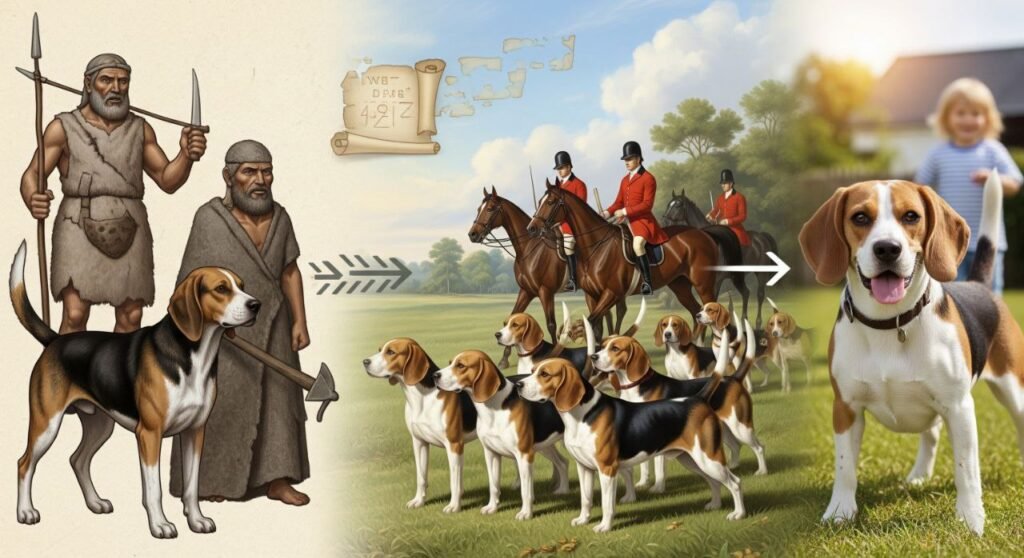
The breed’s name may derive from the French word “be’geule”, referencing the sound the dogs make while on the hunt. Beagles came to the U.S. in the 1800s and quickly gained popularity for both hunting and companionship. Today, Beagles are among the top 10 most popular dog breeds in the United States, according to the American Kennel Club (AKC).
2. Physical Characteristics
Beagle Dogs are compact, muscular dogs that come in two size varieties:
- 13-inch Beagle: For dogs standing 13 inches or less at the shoulder.
- 15-inch Beagle: For dogs standing over 13 inches but not more than 15 inches at the shoulder.

Key Features:
- Weight: 20–30 lbs
- Coat: Short, dense, weather-resistant coat
- Colors: Tricolor (black, tan, and white) is most common, but they also come in lemon, red and white, chocolate tri, and more.
- Ears: Long and floppy
- Eyes: Large, brown or hazel with a gentle expression
- Tail: Medium length, often carried high and tipped with white (helps hunters see them in tall grass)
3. Temperament and Personality
Beagle Dogs are known for their merry and curious nature. They are affectionate, playful, and good with children and other pets. Their strong pack instincts make them love being part of a family, and they dislike being left alone for long periods.
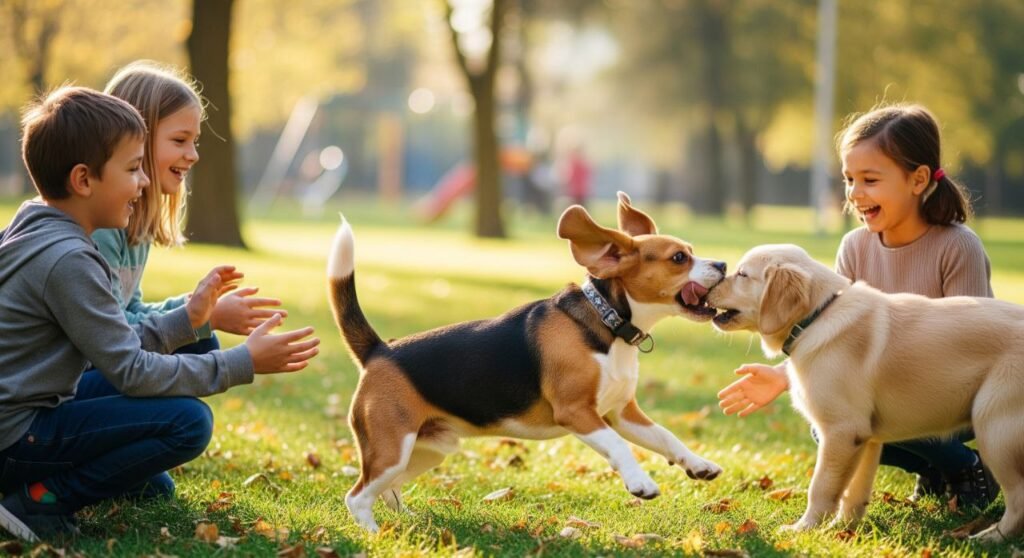
Traits:
- Friendly: Gets along well with people and dogs alike
- Energetic: Needs regular play and exercise
- Curious: Always sniffing, exploring, and investigating
- Stubborn: Can be independent-minded and determined
Don’t expect a Beagle to be a good guard dog—they’re more likely to greet intruders with a wagging tail than a warning bark.
4. Exercise and Activity Needs
Beagles are high-energy dogs with strong hunting instincts. Without enough physical and mental stimulation, they can become bored and destructive.
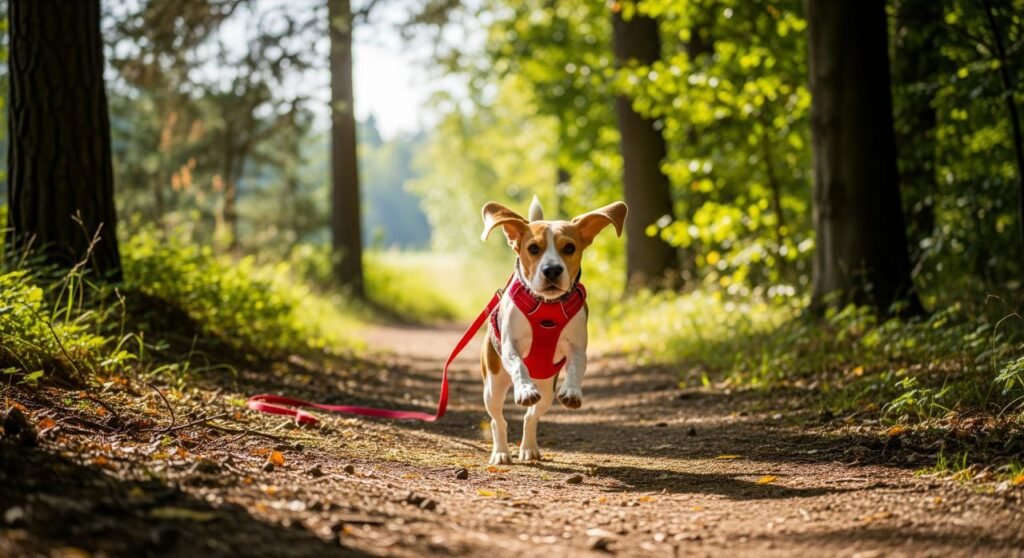
Recommended Activities:
- Daily walks (at least 30–60 minutes)
- Scent games and puzzle toys
- Off-leash time in a secure yard
- Dog parks and socialization
They have a strong prey drive, so always keep them leashed or in a fenced area—they’re notorious for following their noses and ignoring commands when on a scent trail.
5. Training and Intelligence
Beagle Dogs are smart but stubborn. Their intelligence combined with a strong independent streak means training requires patience, consistency, and positive reinforcement.

Training Tips:
- Start training and socialization early
- Use treats and praise—Beagles are food-motivated
- Keep sessions short and fun
- Avoid harsh corrections
House training can be a bit of a challenge, and crate training is often recommended. Their nose often overrides their ears, so a reliable recall command is crucial.
6. Grooming and Maintenance
Beagle Dogs have low-maintenance grooming needs, but regular care helps keep them healthy and clean.
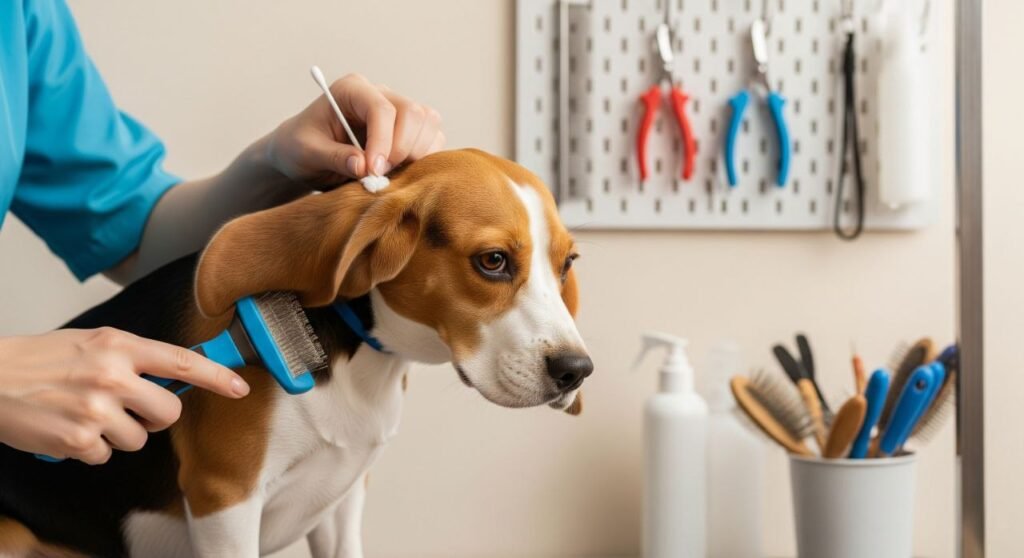
Grooming Needs:
- Brushing: Once or twice a week to remove loose hair
- Bathing: Once a month or as needed
- Ears: Clean regularly to prevent infections
- Nails: Trim every 3–4 weeks
- Teeth: Brush several times a week
Their short coat does shed year-round, particularly in spring and fall, so be prepared for some fur on your furniture.
7. Health and Lifespan
Beagle Dogs are generally healthy, with a lifespan of 12–15 years. However, they are prone to some genetic and health issues.
Common Health Issues:
- Hip dysplasia
- Epilepsy
- Hypothyroidism
- Ear infections
- Obesity
- Intervertebral Disc Disease (IVDD)

Preventive Care:
- Regular vet checkups
- Maintain a healthy weight
- Clean ears and monitor for signs of infection
- Provide plenty of exercise
A well-cared-for Beagle can live a long, happy, and active life.
8. Beagles with Families and Children
Beagle Dogs make excellent family pets. They’re gentle, playful, and patient with children. Their compact size and friendly disposition make them great companions for all ages.
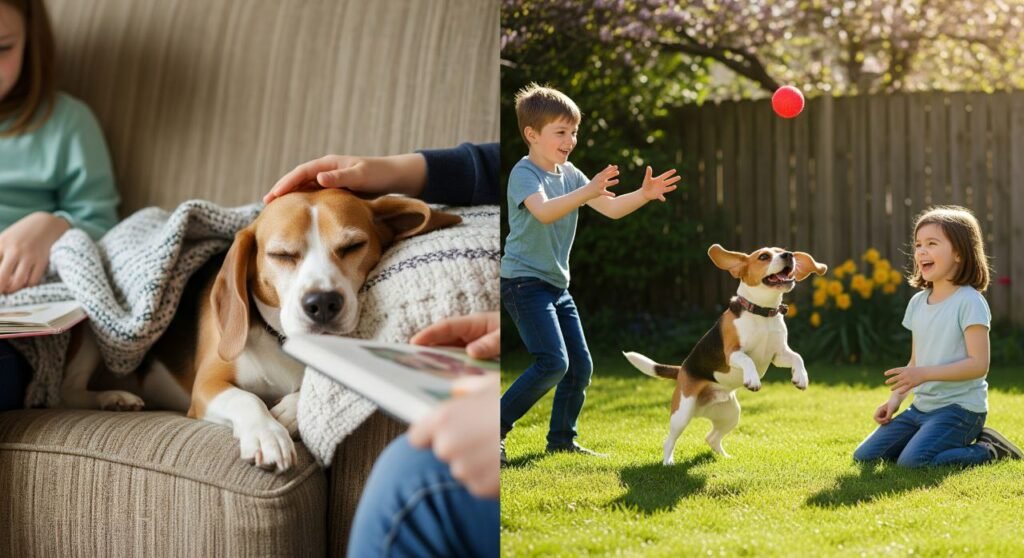
Key Benefits:
- Not too large or fragile
- Rarely aggressive
- Energetic enough to match a child’s play
- Can adapt to both apartments and houses (with enough exercise)
However, supervision is always necessary with young kids to ensure respectful interactions.
9. Common Challenges with Beagles
Despite their lovable traits, Beagle Dogs come with a few quirks:
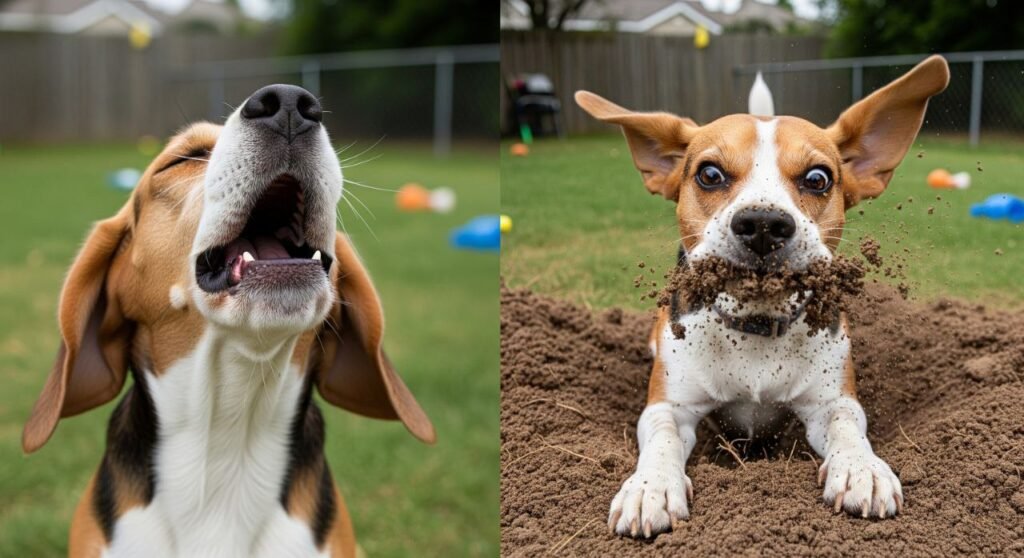
- Vocalization: Beagles are howlers. They bark, bay, and whine, especially when bored or left alone.
- Separation Anxiety: They thrive in company and may act out if left alone too long.
- Escape Artists: Known for digging under fences or squeezing through small gaps in pursuit of a scent.
- Stubbornness: Training requires consistency and positive methods.
These challenges can be managed with proper training, attention, and exercise.
10. Fun Facts About Beagles

- Snoopy, the beloved comic character from Peanuts, is a Beagle Dog.
- Beagles are used in airports and customs due to their strong sense of smell and friendly demeanor.
- The “Beagle Brigade” is a team of USDA detection dogs that help find prohibited agricultural items in luggage.
- Beagles have 220 million scent receptors (humans have around 5 million).
11. Is a Beagle Right for You?
Beagle Dogs are affectionate, energetic, and fun-loving dogs—but they’re not for everyone. Their stubbornness, need for exercise, and tendency to follow their noses mean they need an owner who is patient, active, and prepared for a little mischief.

A Beagle may be right for you if:
- You want a friendly and social dog
- You can provide daily exercise and mental stimulation
- You don’t mind some barking or howling
- You’re consistent with training and boundaries
If you’re ready for a loyal, lively companion, a Beagle might just be the perfect addition to your home.

The Beagle Dog is a breed that brings joy, energy, and laughter into the lives of those lucky enough to share a home with one. They’re not just pets—they’re family. With the right care, environment, and love, a Beagle will reward you with years of companionship and unconditional affection.
Whether you’re adopting a puppy or a rescue, the journey with a Beagle is sure to be an adventure worth having. Learn more about the Beagle on Wikipedia for additional history, breed details, and references.

